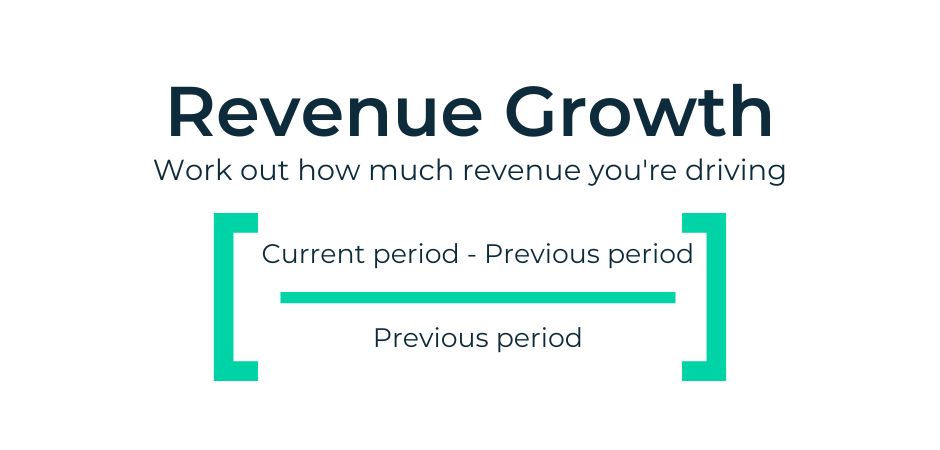Revenue growth is a vital statistic when it comes to assessing your marketing performance. We look at what it is and how to calculate it.
There are a bunch of metrics and ways to analyse the performance of marketing campaigns.
Whether you’re looking at search engine optimisation (SEO), social media or paid campaigns, there are a whole host of marketing metrics you can review and optimise for.
From cost per lead to page speed, it can be hard for marketing teams to prioritise the most important marketing metrics.
Marketers love to use vanity metrics as ways of justifying their investment.
For most businesses though these metrics, while nice to look at, don’t really translate to anything meaningful.
Marketers tend to omit one key metric, the only one that, to a business, counts… revenue growth.
In this blog, award-winning digital marketing and SEO agency Embryo breaks down why marketers, both in house and those in an agency, should put revenue growth on a pedestal and have it above all other metrics.
Well discuss:
So, let’s get stuck in.
Before we dive into why you should focus on revenue growth, let’s first just break down what it even is.
Essentially, revenue growth is just the metrics by which you measure how much your total revenue has grown in a given period.
Revenue growth is a big term and is usually a business-wide strategy as it incorporates HR, sales, and yep, you guessed it, marketing!
Related: How to track revenue and forecast with Ruler Analytics
If growth isn’t where you’d like it, you can do a few things to improve it such as:
Calculating revenue growth is easy. All you need is the total revenue made in your chosen periods.
The formula for it is
(Current Period – Previous Period) / Previous Period

So, let’s say in the ‘current period’ you made £100,000 and in the ‘previous period’ you made £96,000. The formula would look like this:
(100,000-96,000)/96,000=0.0417
Here, we can see that revenue growth is around 4.17%. This, as we’ll touch on, is a pretty good rate of growth.
Defining good revenue growth is a little more complicated than defining the term itself.
It all depends on where in the business lifecycle your company is and what your goals are.
However, a good estimation of growth is around 5% per annum.
Marketers have shifted in the last few decades to focus on metrics such as lead numbers, brand awareness, and supporting their sales team in general.
However, surely the only metric marketing folk should think about and gear all their collateral toward is revenue growth?
There seems to be a distinct lack of clarity as to the overall goal of any marketing efforts.
Sales and marketing are not linear in that one team does their job to help the other do theirs.
There is a disconnect.
Sales and marketing teams often work to different targets and use different tools.
Related: Guide to solving sales and marketing alignment problems
Often, marketing will be working hard to drive new leads with little understanding of how those leads progress.
Meanwhile, sales work to close leads of varying quality, with little feedback to pass on beyond their quality.
And there’s a good reason for this.
The way that leads come into businesses is random, inaccurate, and chaotic.
They generally have a large number of touchpoints with you before converting.
This makes it difficult for marketers to track where they came from, and link data between across a customer journey.
Related: How to view full customer journeys
On top of that leads can bounce around from department to department before they eventually sign.
So, it’s important to set revenue and revenue growth as the single source of truth and align around that goal to measure success.
“But how do I, as a marketer, suddenly align all my ways of working toward one metric?”
Firstly, think about the metrics you already use and then align them towards revenue.
Related: Complete guide to revenue marketing
Content creation shouldn’t just be done without revenue in mind.
Specific pieces of content can be created to target people who are at certain stages of the sales funnel.
Related: How to measure your marketing performance with Ruler
All of a sudden content is created through a revenue lens and can be judged as so over time.
“This blog helped generate two leads which equated to a £4,500 retainer” is an incredibly powerful result and one that justifies the marketing budget.
Focusing on revenue metrics is a state of mind and the different elements of it – sales and marketing – are pieces of the puzzle that all work together toward that one revenue goal.
That’s why both departments should think of themselves as the Revenue Team.
Ultimately, all businesses are about two things:
When you lay it out like that, it’s clear that revenue growth should really be the only metric prioritised by marketers.
Firstly, focusing on growing revenue just eliminates the fluff and waste that can often be created.
The stuff that might look great but, in reality, has achieved the square root of nothing.
Secondly, revenue growth can streamline your marketing and ensure that everything, and everyone, more importantly, is focusing on this north star.
For more on how to leverage analytics to focus on revenue and revenue growth check out Ruler Analytics’ platform.
To discover stunning digital marketing campaigns, get in touch with Embryo.
Charlie is a Content & Marketing Executive at digital marketing agency Embryo. He has over five years of experience in the digital marketing space Since 2015, Embryo has helped businesses across Manchester, Liverpool, and the UK with stunning, award-winning digital marketing campaigns.